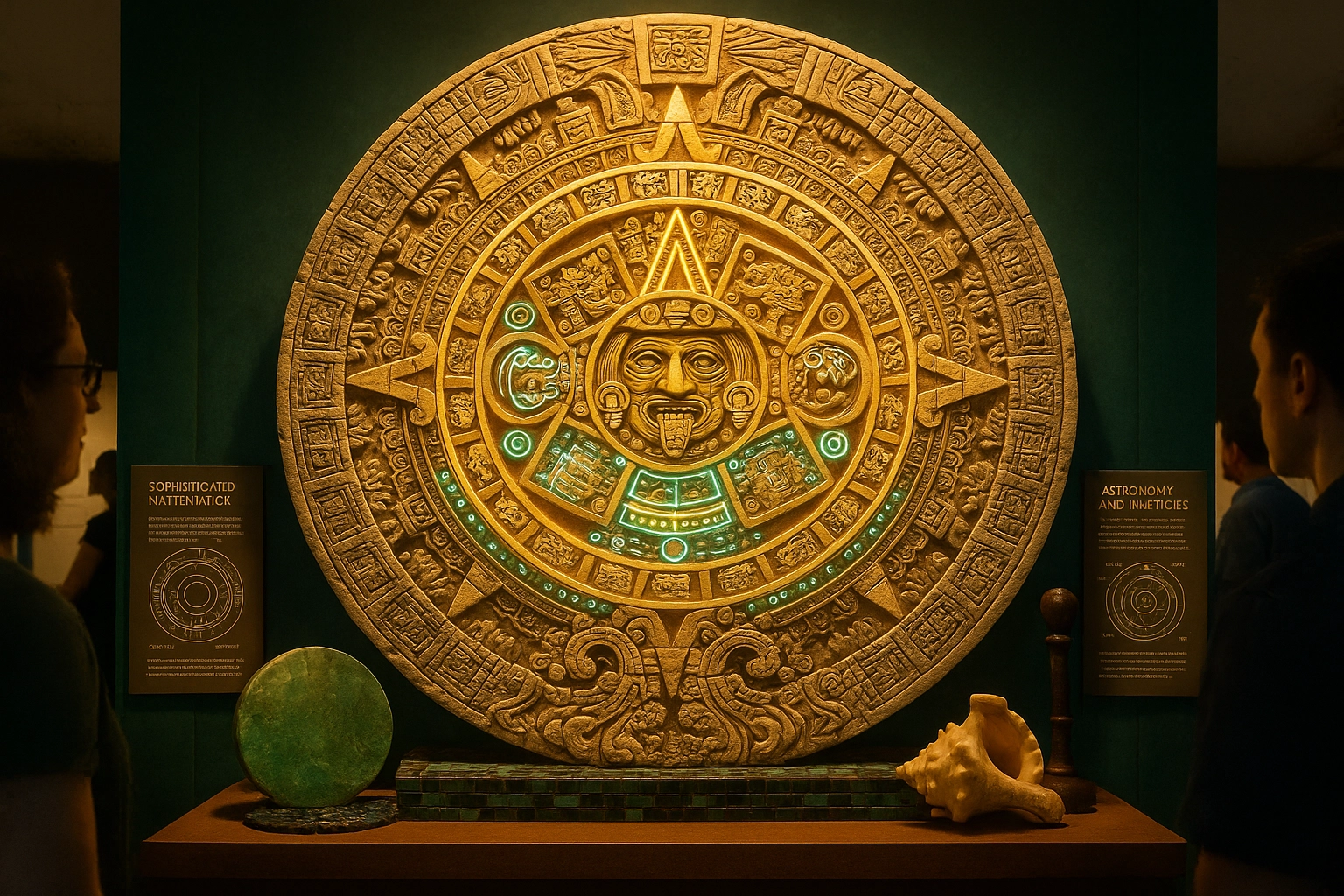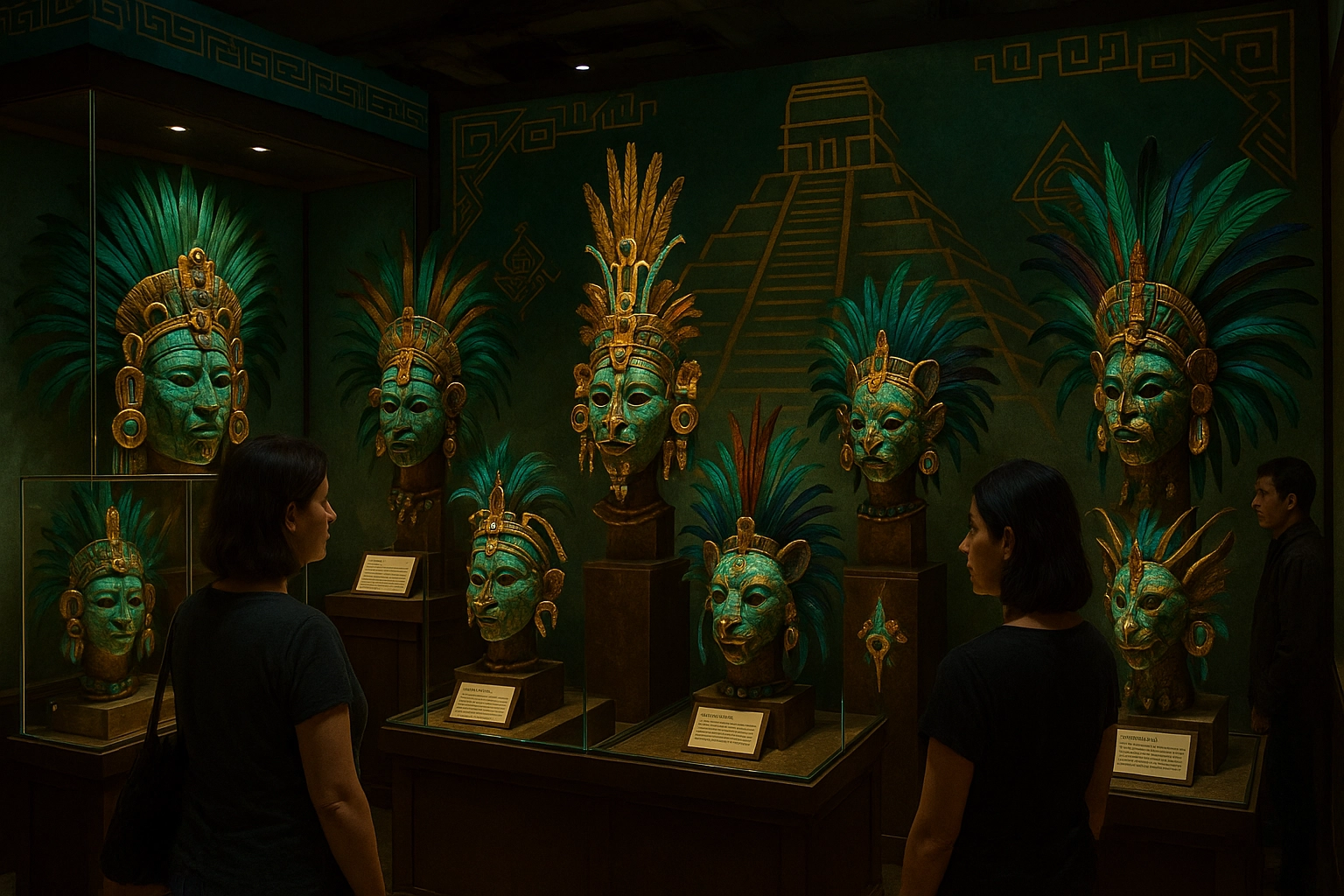Mayan Wisdom Exhibition
Discover the profound wisdom and ancient knowledge of Mayan civilization through our immersive exhibition experience
Exhibition Layout & Experience

Exhibition Floor Plan
Interactive layout showing pyramid models, calendar displays, and astronomical observation areas

Main Exhibition Hall
Featuring ancient artifacts, hieroglyphic displays, and ceremonial recreations

Sacred Temple Display
Immersive temple environment showcasing Mayan spiritual and astronomical knowledge
Historical Origins
The Mayan civilization arose in present-day southern Mexico, Guatemala, Belize, Honduras, and El Salvador. Its roots stretch back to c. 2000 BCE, reaching its peak between 250–900 CE (the Classic Period), with major cities such as Chichen Itza, Palenque, Tikal, and Copán.
Emergence & Development
The Maya are renowned for their monumental architecture (step pyramids, temples, observatories), mathematics, hieroglyphic writing, and astronomical knowledge. The civilization was organized into city-states, each ruled by a 'kʼuhul ajaw' (holy lord).
Key Figures & Leaders
Ajaw (Kings)
Divine rulers of city-states, such as Pakal of Palenque.
Priests and Scribes
Managed rituals, calendar, astronomy, and written records.
Hero Twins
Mythic figures of the Popol Vuh, central to Mayan creation mythology.
Core Concepts & Beliefs
Cosmic Cycles
Life and time governed by cyclical patterns in calendars.
Sacred Duality
Balance between sky/earth, life/death, male/female.
Spiritual Elevation
Pyramids and rituals symbolized ascent to the divine.
Popol Vuh
Sacred 'Book of Counsel' containing creation myths.
Fundamental Principles
Astronomy & Mathematics
Precise observations and vigésimal number system with zero.
Hieroglyphic Writing
Syllabic and logographic script on monuments.
Calendar Systems
Tzolkʼin, Haab', and Long Count for time measurement.
Agricultural Wisdom
Milpa farming and sacred maize cultivation.
Sacred Symbols & Elements
Step Pyramid
Ascension, sacred mountains, connection with heavens.
Kukulkan (Feathered Serpent)
Major deity representing sky and earth connection.
Jade
Sacred material, symbol of life and the heart.
Calendar Stone
Cyclical time and cosmic order representation.
Major Rituals & Ceremonies
Astronomical Rituals
Star-watching, calculation, and interpretation of omens.
Ballgame (Pok-ta-Pok)
Ritual sport symbolizing cosmic struggle and renewal.
Cenote Offerings
Ritual gifts to the gods in sacred wells.
Ancestor Veneration
Connecting with and honoring the departed spirits.
Global Influence & Cultural Impact
Mathematics & Astronomy
Introduction of zero, complex calculations, accurate eclipse predictions, and calendar systems that influenced global understanding of timekeeping and cosmic cycles.
Architectural Legacy
Step pyramids and astronomical alignments influenced later Mesoamerican and global architecture, with sites like Chichen Itza becoming UNESCO World Heritage locations.
Contemporary Maya
Over 6 million Maya live today, maintaining languages, rituals, and traditional knowledge across Mexico and Central America, contributing to cultural revival movements.
Important Spiritual Books & Texts
Popol Vuh
Sacred narrative of creation, hero twins, and cosmic order
Chilam Balam Books
Colonial-era texts preserving pre-Columbian knowledge
Dresden, Paris, Madrid Codices
Surviving pre-Hispanic Maya books with astronomy and rituals
Associated Sacred Places & Structures
Chichen Itza
El Castillo pyramid, astronomical alignments, sacred cenote
Palenque
Temple of Inscriptions, royal tombs, hieroglyphic records
Tikal
Massive temple complexes in Guatemalan rainforest
Uxmal & Copán
Major ceremonial and urban centers with astronomical significance
Traditional Mayan Teaching
"In lak'ech, Hala ken"— Core Mayan greeting and philosophical teaching on the unity of all beings
"I am another you, you are another me."